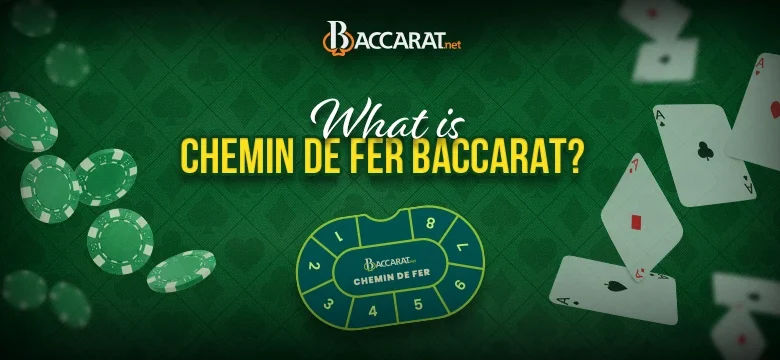Mastering Chemin de Fer – A Strategic Baccarat Game


Listen to this article:
If you are a regular player of online baccarat, then you will be most familiar with Punto Banco. However, if you have ever tried your hand at baccarat in a land casino, particularly in Europe, then you may well have come across the variant Chemin de Fer, one of the oldest versions of baccarat.
Chemin de Fer baccarat is the earliest two-player version of the game that is still played today. Developed in 19th-century France, the game takes its name from the French for “railway”, the fastest mode of transport at the time. This is because it was a speedier version of baccarat than those that had come before.
How Chemin de Fer Differs from Punto Banco
The main difference between Chemin de Fer and Punto Banco is in the gameplay structure and the role of the players. In Punto Banco, players bet on pre-determined outcomes (player, banker, or tie), while the casino controls all game actions. Chemin de Fer, by contrast, is a social game in which players compete against each other rather than the house.
In Chemin de Fer, players take turns being the banker and bet against other participants. The dealer runs the game but does not participate directly. In contrast, Punto Banco revolves around the house managing the “banker” role.
Furthermore, Chemin de Fer has a strategic element that is not present in Punto Banco. Players can decide whether to draw a third card under certain conditions, whereas Punto Banco follows strict rules for card drawing.
Finally, Cards in Chemin de Fer are dealt face-down, which adds both mystery and strategy, while in Punto Banco, cards are dealt face-up.
Chemin de Fer Gameplay and Rules
The goal in Chemin de Fer, as with all baccarat variants, is to achieve a hand value as close to 9 as possible. Cards 2 – 9 are worth their face values, tens and face cards are worth zero, and aces are valued at 1. If a hand’s value exceeds 9, only the second digit of the total counts (e.g., a hand totaling 15 is worth 5).
Chemin de Fer rules set the game to be played as follows:
- Banker Rotation and Betting – Players rotate, taking turns as the banker. The banker sets the bet amount, and other players bet against it. If no single player matches the banker’s bet, other players can combine their bets to equal the banker’s total.
- Card Distribution – The dealer distributes two face-down cards each to the banker and the player representing the table.
- Drawing Decisions – Players may choose to draw a third card based on their initial hand. Decisions are guided by basic strategy, drawing with totals of 0–4, standing on 6 or 7, and choosing freely with a total of 5.
- Reveal and Outcome – Both sides reveal their hands. The higher total wins and if there is a tie, the bet is carried over to the next round.
Chemin de Fer Strategies
In addition to being familiar with the rules of the game and how a round is structured, there are a few additional strategies that are worth keeping in mind when playing. The first is to always stick to the basic drawing strategy explained above. Mathematically, it is the best way to play, and it is important to follow it at all times.
You should also make sure to manage your bankroll sensibly. It is vital to have a fixed bankroll and never exceed it. Furthermore, you should also know how to spread your bankroll over your hands. As a basic guide, your starting bankroll should be anything from 100 to 200 times the size of your bets. For example, if you are betting $2 per hand, you should have a starting bankroll of between $200 and $400. Therefore, be sure to only play at tables that are suitable for your bankroll. If you’re looking for additional advice on money management, GamCare provides useful resources.
If you are playing as the banker, then you have control over the bets and can influence the game. Be sure to set bets that are attractive to opponents, and don’t stretch your bankroll. It is also worth playing conservatively as the banker, and standing on higher totals, such as 6 or 7, is often the safer way to play.
As Chemin de Fer is a social game where players compete against each other, paying attention to your opponents’ can provide insights. For example: players who consistently draw cards with totals of 5 or higher may leave themselves vulnerable to overreaching. While, opponents who rarely draw might be playing defensively. If you look for these patterns, you can begin to anticipate how others may play, which can help you make more informed decisions.
It is unlikely that Chemin de Fer baccarat will become a standard form of online baccarat any time soon. However, if you do come across it in a casino and apply these strategies, you’re sure to enjoy this fast-paced game.

Hi, I’m Caroline, an experienced editor with a rich background in journalism. My career began at several Boston-based newspapers, where I specialized in editing and …



